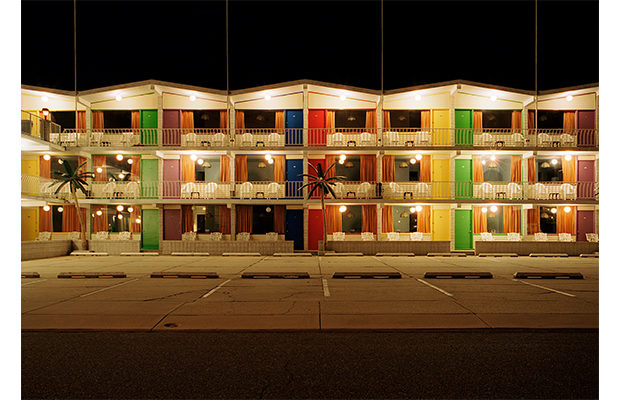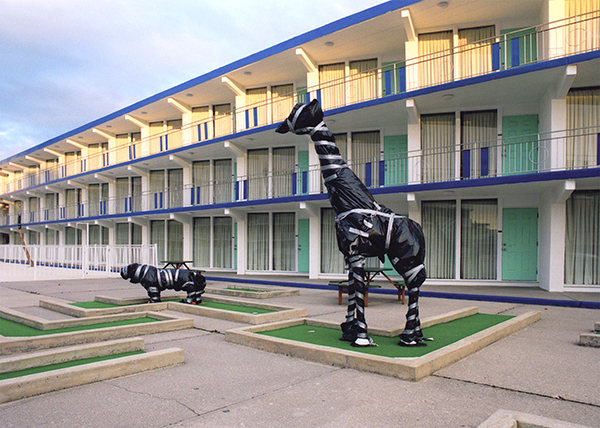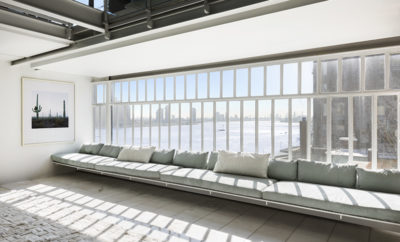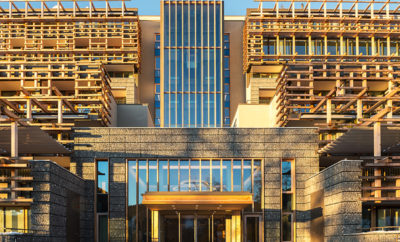
Architecture
A Glimpse into Wildwood’s Vanishing Architecture
In Out of Season: The Vanishing Architecture of the Wildwoods, you step into Wildwood’s motel-lined streets—populated by paint-chipped, cinder block and stucco buildings, and topped by cantilevered roofs and aging neon signs. Photographer Mark Havens captures the beauty of each space through small details, from the specific placement of each chair to the unbroken symmetry between every window and door. The book is Havens’s decade-long project, composed of dozens of images, documenting the mid-century hotels in this seaside town, some still standing, others repurposed, and many that eventually succumbed to demolition.
For those unfamiliar with the area, Wildwood is a summer resort town located on a small barrier island at the tip of southern New Jersey. Its string of Googie or Doo Wop-style motels (as the style was dubbed in Wildwood) was erected in the 1950s and early 1960s around the same time the Garden State Parkway, a four-lane toll road that runs along the entire state of New Jersey, was nearing completion. Thanks to the new thoroughfare, vacationers from neighboring states could jump in their cars and easily access beach getaways like Wildwood.
Miami developers started moving north, bringing their splashy aesthetic to town. Cars filled the parking spots in front of the motels, and soon enough, Wildwood became a popular escape to an exotic fantasyland for blue-collared families.
Havens’s photographs present midcentury architecture within the landscape of the casual beach vacation. In fact, some of his most interesting shots were after the sun set, when the neon signs displayed in front of each motel cast a vibrant glow over the darkened sky. Names such as Satellite, Astronaut, Bel Air, Kona Kai, and Waikiki lit up the streets, and exuded the lively, futuristic feel of their dwellings.
The book also includes two essays by critic and architect Joseph Giovannini and professor Jamer Hunt, who is the director of the MFA Transdisciplinary Design program at Parsons The New School for Design. Hunt divulges the substance behind the motels’ cinder blocks and thin coats of paint, while Giovannini describes the appeal of these motels for middle-class families, and both reflect on the simplicity of the design. “The visual quietude of Havens’ work invites us to linger a bit longer on elements that we might otherwise have ignored,” says Hunt. “Beyond the audacious, the components of Wildwood’s more subtle expressivity range from contrasting painted doors and poles and the judicious use of flagcrete to curvilinear balustrades, canted walls, ornamental brickwork, and strategically placed light fixtures.”
Out of Season: The Vanishing Architecture of the Wildwoods provides a lasting record of a piece of architectural history that is otherwise fading fast. With at least forty-seven Wildwood motels either demolished or closed, Havens’s photographs show the importance of capturing and preserving this architectural legacy before it is gone for good.
While many structures have already been turned into condos or bulldozed, organizations like the Doo Wop Preservation League are dedicated to saving the Wildwood motels and their history from further destruction. These motels embody an important ethos of the post-WWII era when families traveled together in station wagons and sought a vacation that reflected the optimism and exuberance of the time.













